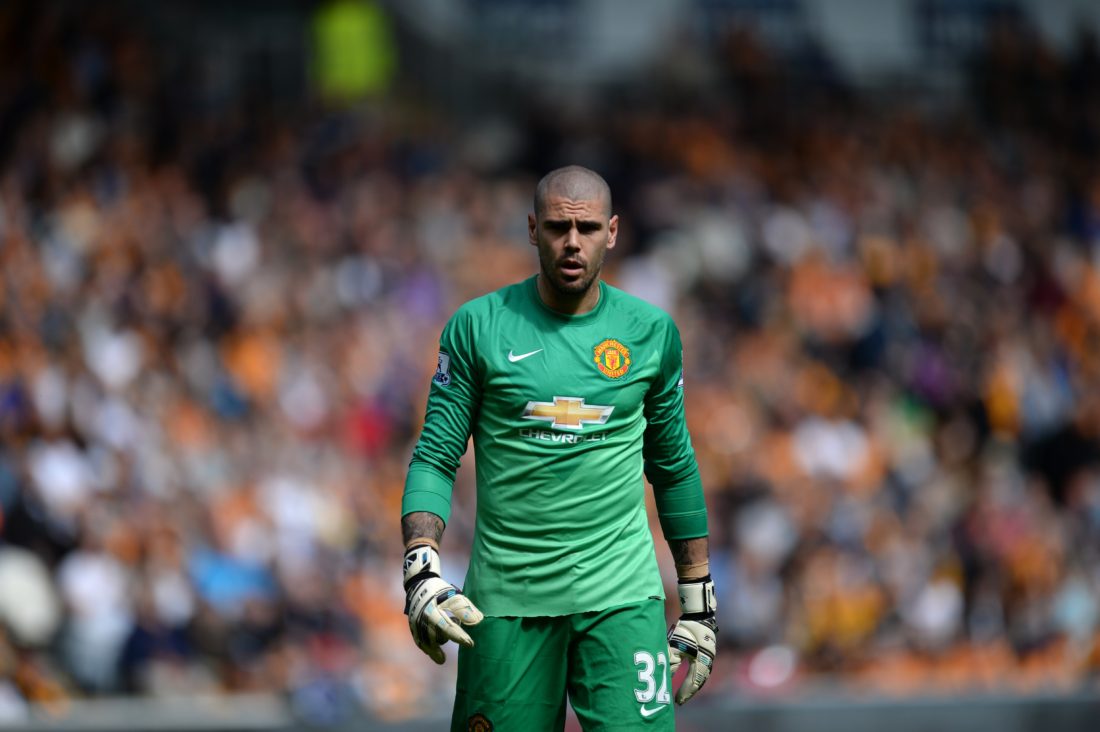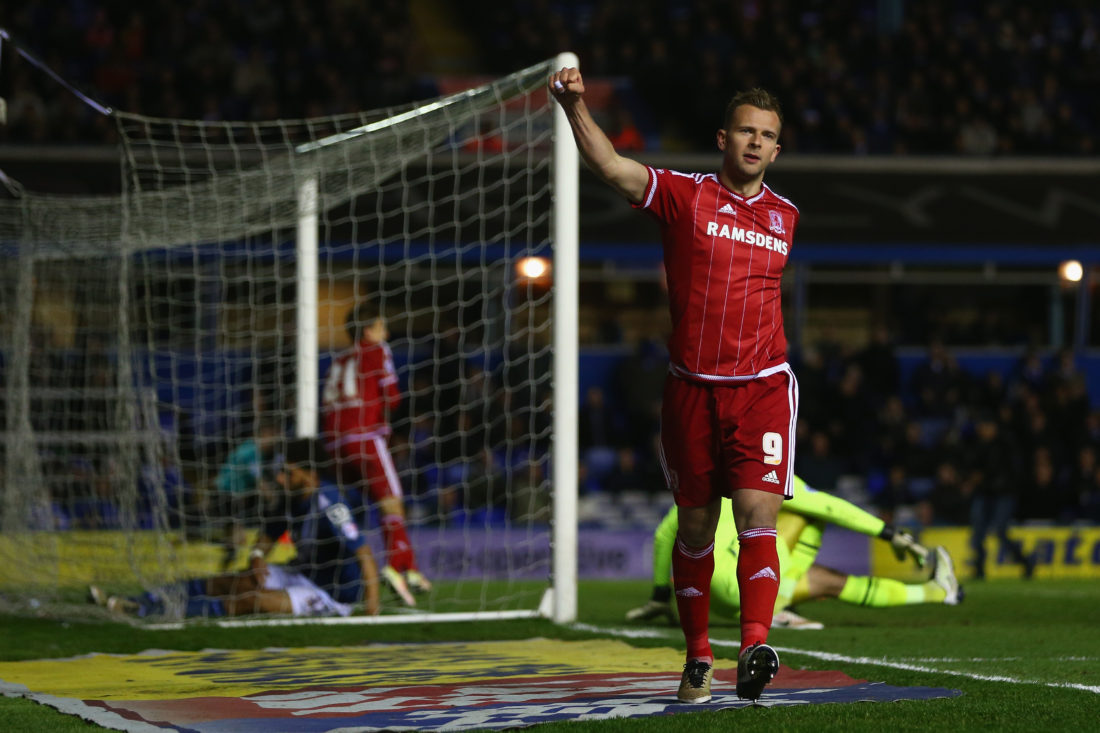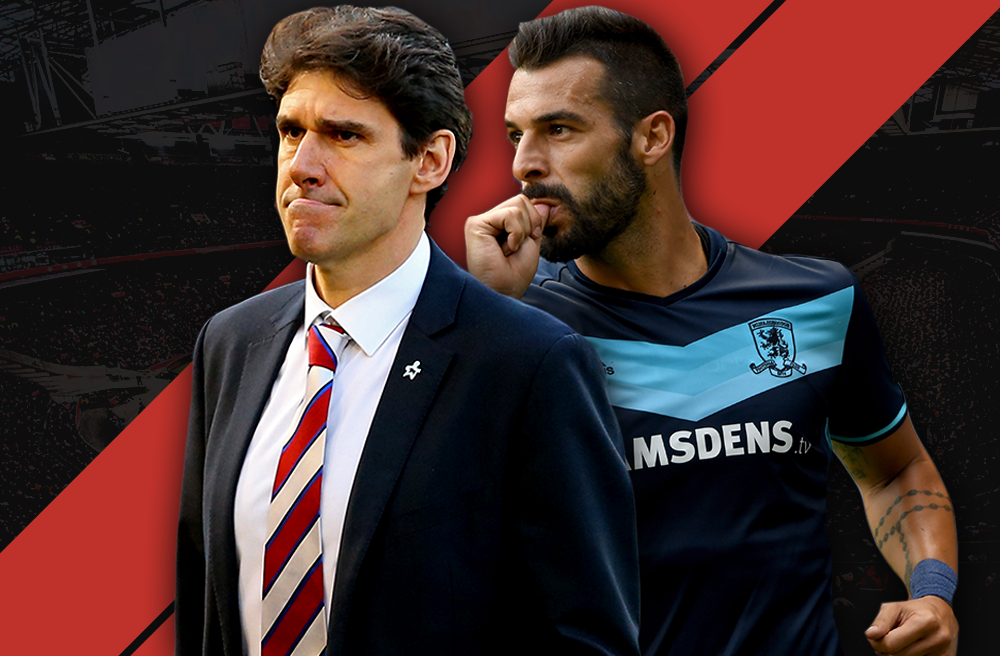
Being a football hipster is serious business with knowledge about the young starlet making waves for a non-mainstream mid table side often a prerequisite rather than a feather in the cap. To further enhance your, perhaps, burgeoning reputation as a true hipster, Outside of the Boot is on hand to provide an in-depth guide to some of the less celebrated teams around Europe. In this edition of the series, Phil Baki tells us about Middlesbrough.

THE PREVIOUS CAMPAIGN
Chip on their shoulder. Something to prove. Boro are back, baby and it is due in large part to a group of players that want to show everyone in England and Europe that they have been underestimated. It’s no wonder then that this team has taken that persona on and worn it proudly as a badge of honor.
It’s been seven long seasons in the Football League Championship for the North Yorkshire-based club. Seven seasons since Gareth Southgate patrolled the touchline. Seven seasons since Tuncay rode his bicycle into the Goal of the Season lists.
Remarkably, they’re only 10 seasons removed from an appearance in the UEFA Cup (now Europa League, just to be 100% clear) Final against seemingly perennial champions Sevilla. However, seven is where the exile from the top-flight ends for Aitor Karanka and his just-shy-of-ragtag gang of heroes as a second-place finish in the English Second Division has earned them a place back at the pinnacle. I refuse to make a Leicester comparison at this point as everyone will lose their minds, but I will say that Boro has reached this point with only 63 goals scored in 46 league games, which is in no way an overwhelming number. Christian Stuani, Albert Adomah, and new signing Jordan Rhodes contributed most to that total. However, they allowed only 31 goals in that span, the best in the division. That solidity combined with a penchant for capitalizing on opponents’ mistakes and a little flair for the spectacular put Boro back among the top 20 teams in England and now will look to cement their place there.
MANAGER PROFILE
Aitor Karanka is a young manager who is not often mentioned among groups of promising, young managers despite a quite impressive pedigree. Karanka made his name as a player for Athletic Bilbao and Real Madrid, the latter of which he returned to as assistant to Jose Mourinho. Here, Karanka developed his style of play which, similar to his boss, emphasizes defensive solidity over exhilarating, attacking play.

Karanka led Middlesbrough back into the Premier League. CHRIS BRUNSKILL / Getty Images
When Karanka was hired at Boro, they were struggling toward the bottom of the Championship table. The mandate initially was to stop the bleeding and stabilize Boro in their current division. Once that step was complete, the next goal was to make the promotion playoffs, which Boro nearly surpassed at the first time of asking. In the penultimate game of the 14/15 season, it took a very late winner from Fulham, which may or may not have been caused by a very audacious call by Karanka to send the keeper forward on a corner in a tie game. Having been sent to the playoffs by Ross McCormack, Boro did its job in the semifinals with a 5-1 aggregate win over Brentford. It didn’t continue all that long though as Norwich ended the dream at Wembley in the playoff final. Karanka’s willingness to see the project through to completion eventually paid off with Boro’s second-place finish behind Burnley last season which spared them the potential agony of another playoff final loss.
TACTICAL APPROACH
It is not difficult to make assumptions about the direction that Aitor Karanka has applied to his team since he became the boss at Middlesbrough. As a student of Jose Mourinho, there was only ever one approach he was going to take. The bus was well and truly parked, with the best defensive record in the Championship to show for it. Despite a flat 4-4-2 often being the formation of choice when trying to provide stability in England’s second tier, Karanka instead chose to employ a 4-2-3-1. This again will not be any surprise to those who know Jose Mourinho as he has used a similar formation for years. The back four, while not completely focused on defense, certainly knew Karanka’s priorities. The two center backs were expected to be solid with the full backs providing defensive stability in addition to some threat going forward. These four had additional help from the two central midfielders. The two in midfield were charged both with protecting the back line and linking play forward.
The job of the central midfield in this system is focused much deeper than in similar formations. Less is made of a central midfielder’s ability to get into dangerous positions and score goals from outside the box and much more emphasis is placed on breaking up the opposition’s play and quickly transitioning from defense to attack. As a result, the attackers in this formation are freer to focus on attacking and some defensive pressing, while constantly searching for space to exploit behind the defense. This setup leads to an abundance of goals from counter attacks but the freedom of the attackers allows them enough creativity in possession and enough options going forward to eliminate any thoughts of a boring, stodgy style hell bent on frustration of the opposition and seemingly the fans as well.
Karanka fulfilled this tactical vision of a defensively solid team that scored just enough goals to be dangerous by utilizing the personnel at his disposal to their utmost. Dimitrios Konstantopolous, who had played all over England between 2003 and 2012, and never to great effect, made 46 appearances for the club and contributed to the absolutely fantastic defensive record that the club posted. Ben Gibson and former Liverpool Academy product Dani Ayala anchored the central defense with Emilio Nsue and George Friend lining up either side of the pair and rounding out the back four. Adam Clayton and Grant Leadbitter formed that midfield pair most often and provided that support to the defense that Boro needed. Stewart Downing and Albert Adomah played out on the flanks and provided service to David Nugent and 11 million pound January arrival Jordan Rhodes from the wide positions.
The position behind the striker proved a very difficult problem for Karanka as Diego Fabbrini showed only flashes of brilliance in the position before Karanka found a more permanent solution. Gaston Ramirez, who had failed to live up to his billing since joining Southampton from Bologna, filled that position to the utmost and helped Karanka complete his vision of the defensive-but-dangerous 4-2-3-1.
TRANSFER MARKET ACTIVITY
Boro’s transfer activity has been perhaps the most surprising thing of this offseason. They wasted absolutely no time in shoring up a number of positions that they feel weak in heading into a desperate struggle to stay in the Premier League. The first improvement that was identified was at keeper, where they picked up both out-of-favor Manchester United player Victor Valdes and American international Brad Guzan. Undoubtedly they’ve created competition at a position where a journeyman Greek was previously filling the role. They also made the signing of Gaston Ramirez permanent, locking down what Karanka certainly sees as a vital cog in his promotion machine of last season. This is where Boro started turning heads.

Victor Valdes needs to resurrect a career that has been on a downward spiral with his Manchester United stint the latest calamity. OLI SCARFF / AFP / Getty Images
After signing Bernardo Espinosa of Sporting Gijon and Antonio Barragán of Valencia to shore up the defense, Boro picked up the services of Alvaro Negredo, albeit on loan from Valencia. The big, Spanish striker has not been able to recapture the form of his halcyon days at Manchester City but could prove a difference maker in a campaign that will prove very taxing on the squad. The last two signings though have really caught the eye, with Boro locking down Viktor Fischer from Ajax and Marten de Roon of Atalanta. Fischer lines up most frequently on the left wing but can play across the front four, sometimes featuring as a striker. He scored 12 goals and assisted 4 more in 45 appearances in all competitions last season. De Roon is one of the marquee signings, with Boro shelling out about 13 million pounds for the defensive midfielders services. He only contributed 2 goals and 2 assists in all competitions but will give Karanka a fantastic option in front of his back four. The bottom line is Karanka’s team have gotten better and his activity in the window has given Boro a real shot at survival this season.
THREE KEY PLAYERS
Gaston Ramirez: The Uruguayan playmaker looked set for a career explosion as he made the move to Southampton from Italy in 2012. Sadly, the move did not affect his career in the way he probably thought it would and after being mired in a series of loan moves, finally finding his way to Boro in January 2016. Deployed in the 10 role, Ramirez acclimated to life in North Yorkshire quite quickly and became what many see as the lynchpin to Boro’s attacking efforts. His seven goals and four assists were vital as Boro pushed for promotion and with a full season to prove himself in the top flight, they will look for him to add to both of those tallies quite a bit.

Jordan Rhodes has experienced success in the lower leagues, but now has to prove himself at the highest level in England. MICHAEL STEELE / Getty Images
Jordan Rhodes: The main man, the target, the focal point. However you want to refer to the man at the top of Karanka’s 4-2-3-1, one thing remains blatantly clear; Jordan Rhodes is going to have to show up for Boro to stand a chance this season. With 16 goals split between Blackburn and Boro last season in the Championship, Rhodes has a ton to prove at the Premier League level. He has reached it the old fashioned way, climbing up the ladder with a few different clubs before finally reaching the pinnacle with Boro. He will need to continue his production at this high level in order to stay. With service from Ramirez, Stewart Downing, Albert Adomah and even deeper from de Roon, he should have plenty of opportunities, can he take this big one?
Daniel Ayala: This Boro team of last season, of which Daniel Ayala was a big part, kept 22 clean sheets, which is by no means a small feat. With the departure of Boro mainstay Jonathan Woodgate, Ayala has quickly become one of the most experienced defenders in this side. At 24, the ability to handle what will be a pressure-packed situation in the struggle to avoid relegation is absolutely critical. Ayala helped form what was the best defense in the Championship last season and they will have to put in a similar effort to give Boro a shot at survival this year. He is a big center back who can play with the ball at his feet and even chipped in with three goals and two assists last season. Ayala will have to be a leader in this team and organize the defense against what will be a coming onslaught of Premier League attackers.
TALENT RADAR KEY YOUNG PLAYER
Viktor Fischer: Middlesbrough had a fantastic season last year, and yet their goal return left something to be desired. Although a compelling case could be made that defensive midfielder Julien de Sart should be named the key young player, Boro need goals. They need dynamism. In the Dane, Viktor Fishcher, they have that.

Danish international, Viktor Fischer, comes with a glowing reputation in the Eredivisie. ATSUSHI TOMURA / Getty Images
A left-winger with an eye for goal, Fischer is capable of changing games and could do just that for a Boro team that will be trying to shake off their offensive shortcomings in a big way. Fischer had been whispered about by quite a few big clubs as he came through the system at Ajax and now has an opportunity to prove at Boro that he has become the player many thought him to be.
CONCLUSION AND EXPECTATION
Middlesbrough are here. They are back in the top flight after seven years and they are out to show that another trip back to the Championship will not be coming anytime soon. The chip on each player’s shoulder is more of a crater and each of them seem hell bent on proving that they belong. With a shrewd tactical manager who has been taught by one of the best and equally shrewd business in the transfer market, Boro look like they are well and truly on the way up.
Read all our 2016-17 Hipster Guide articles here.
- Talent Radar: Bundesliga 10 Young Players (U-19) to Watch in 2016-17 - September 6, 2016
- Hipster Guide 2016-17: Middlesbrough’s tactics, key players, and emerging talents - August 11, 2016
- Im Herzen Vereint: The Incredible Story of Dynamo Dresden - July 13, 2016



























































